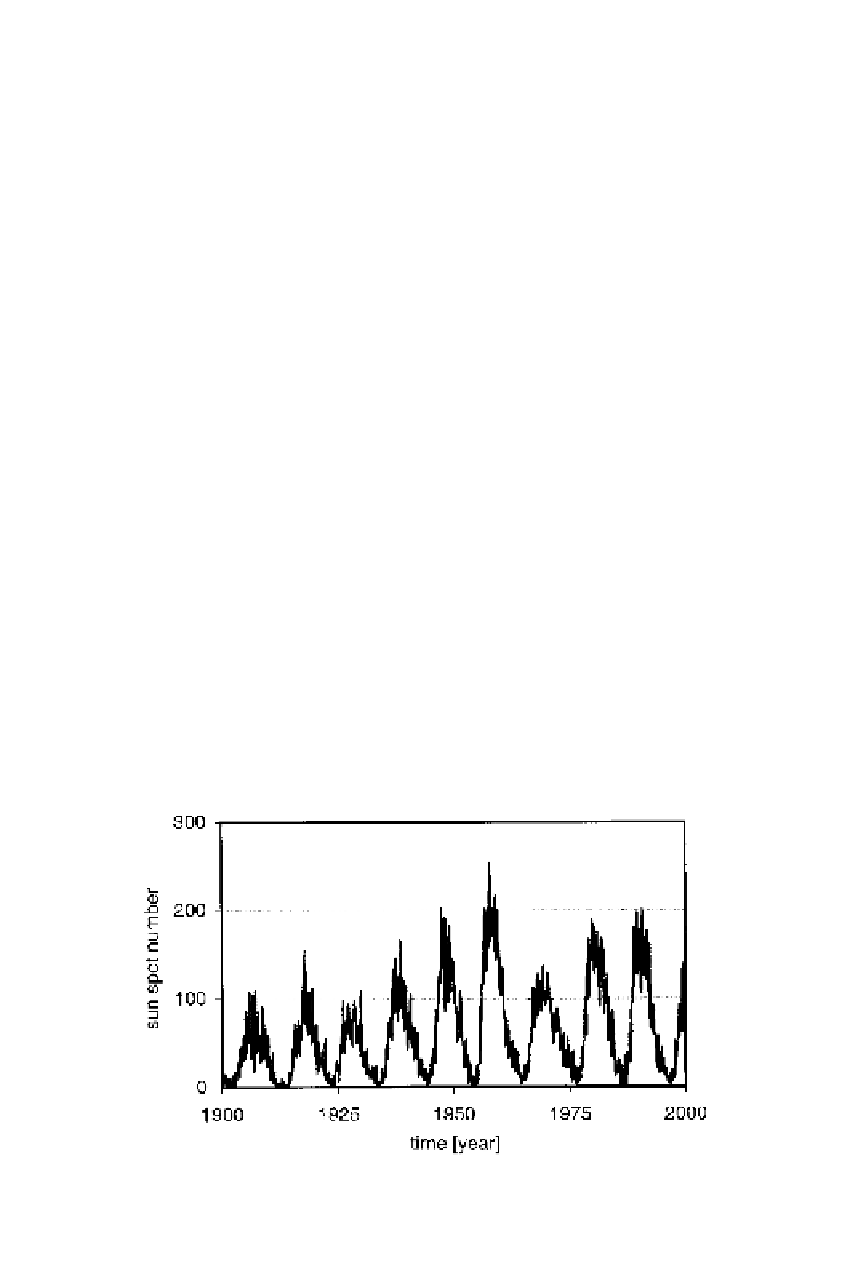Global Positioning System Reference
In-Depth Information
1
2
3
4
5
6
7
8
9
10
11
12
13
14
15
16
17
18
19
20
21
22
23
24
25
26
27
28
29
30
31
32
33
34
35
36
37
38
39
40
41
42
43
44
45
plitude scintillation, even under geomagnetically disturbed conditions, is normally
not large in the auroral regions. However, rapid phase scintillation can be a problem
in both the equatorial and the auroral regions, especially for semicodeless L2 GPS
receivers, as the bandwidth of such receivers might be too narrow to follow rapid
phase scintillation effects. Strong scintillation in the equatorial region generally oc-
curs in the postsunset to local midnight time period, during geomagnetically quiet
periods, mostly during equinoctial months in years having high solar activity. Even
during times of strong amplitude scintillation the likelihood of simultaneous deep
amplitude fading to occur on more than one GPS satellite is small. Thus, a modern
GPS receiver observing all satellites in view should be able to operate continuously
through strong scintillation albeit with a continuously changing geometric dilution of
precision (GDOP) due to the continually changing “mix” of GPS satellites in lock.
Sunspots are seen as dark areas in the solar disk. At the dark centers the temper-
ature drops to about 3700 K from 5700 K for the surrounding photosphere. They
are magnetic regions with field strengths thousands of times stronger than the earth's
magnetic field. Sunspots often appear in groups with sets of two spots, one with pos-
itive (north) magnetic fields, and one with negative (south) magnetic fields. Sunspots
have an approximate lifetime of a few days to a month. The systematic recording of
these events began in 1849 when the Swiss astronomer Johann Wolf introduced the
sunspot number. This number captures the total number of spots seen, the number
of disturbed regions, and the sensitivity of the observing instrument. Wolf searched
observatory records to tabulate past sunspot activities. He apparently traced the ac-
tivities to 1610, the year Galileo Galilei first observed sunspots through his telescope
(McKinnon, 1987). Sunspot activities follow a periodic variation, with a principal
period of eleven years, as seen in Figure 6.12. The cycles are usually not symmetric.
The time from minimum to maximum is shorter than the time from maximum to
minimum.
Sunspots are good indicators of solar activities. Even though sunspots have a high
correlation with CME and solar flux, there is no strict mathematical relationship
[21
Lin
—
0.0
——
Lon
PgE
[21
Figure 6.12
Sunspot numbers.












































